
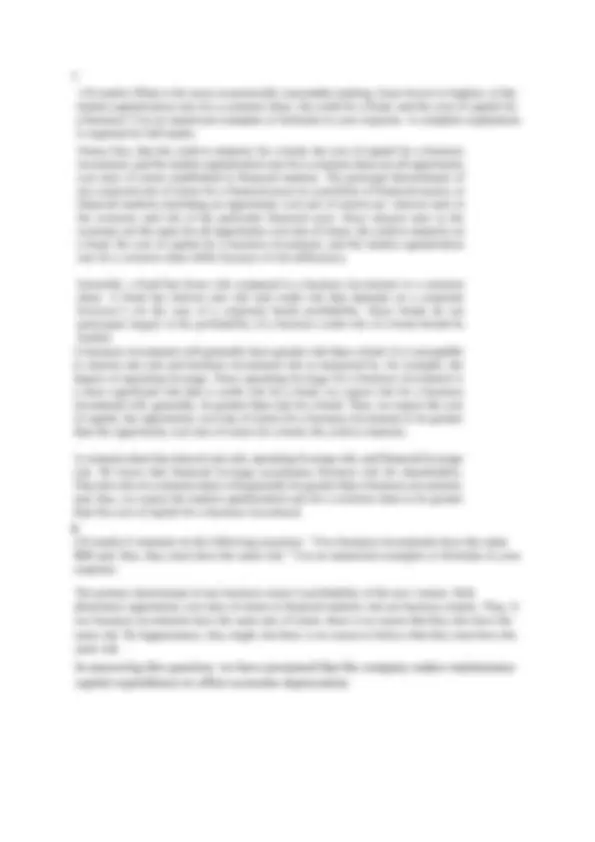
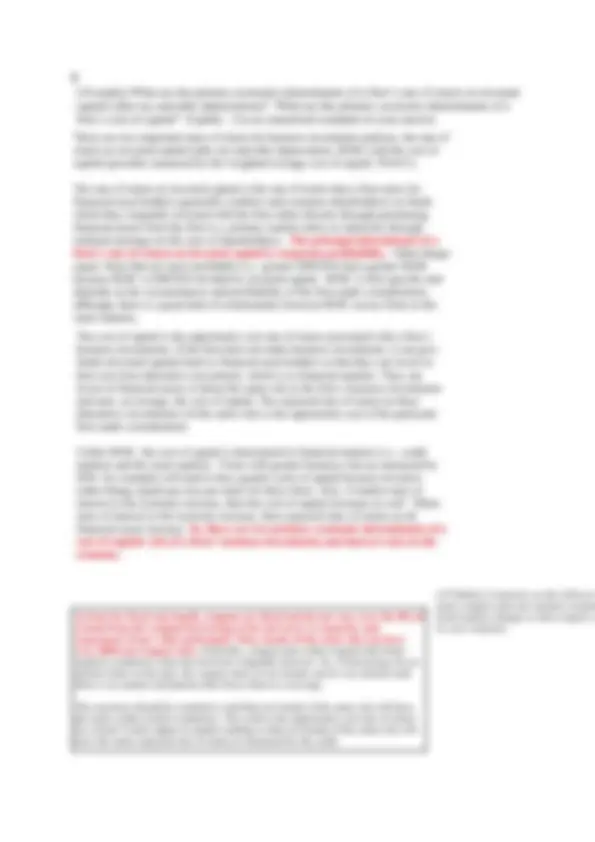

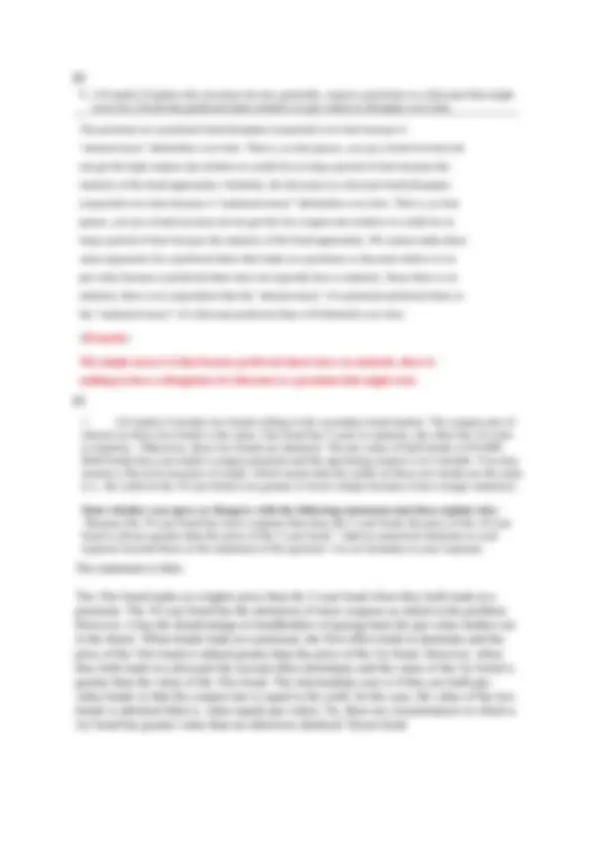
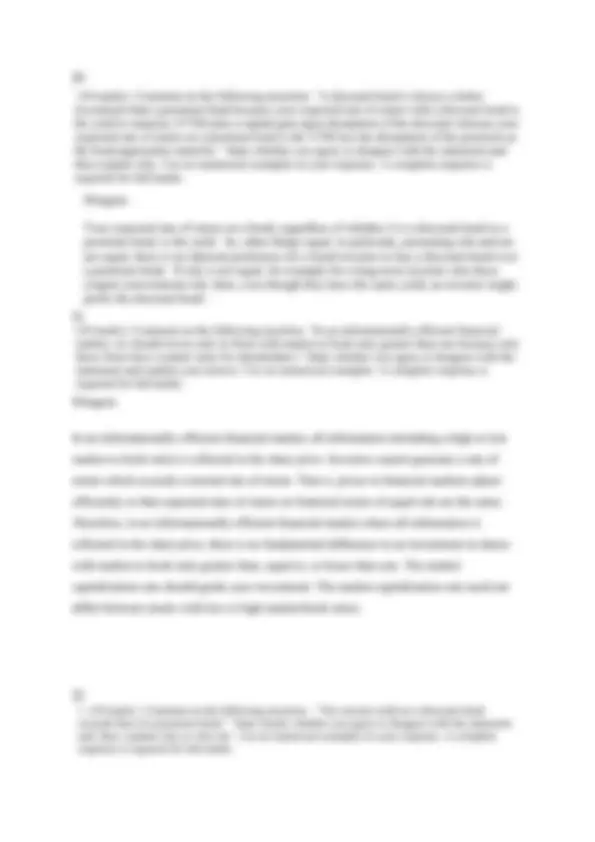
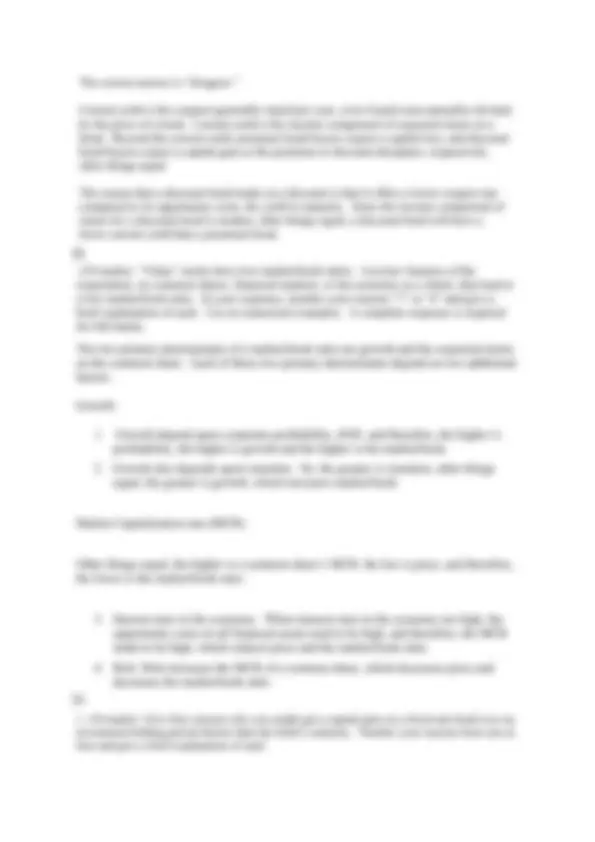
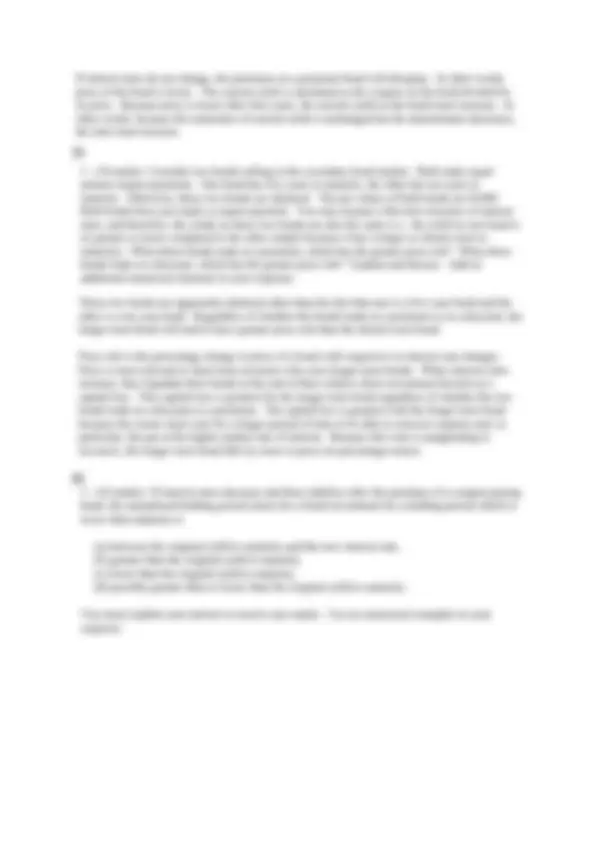
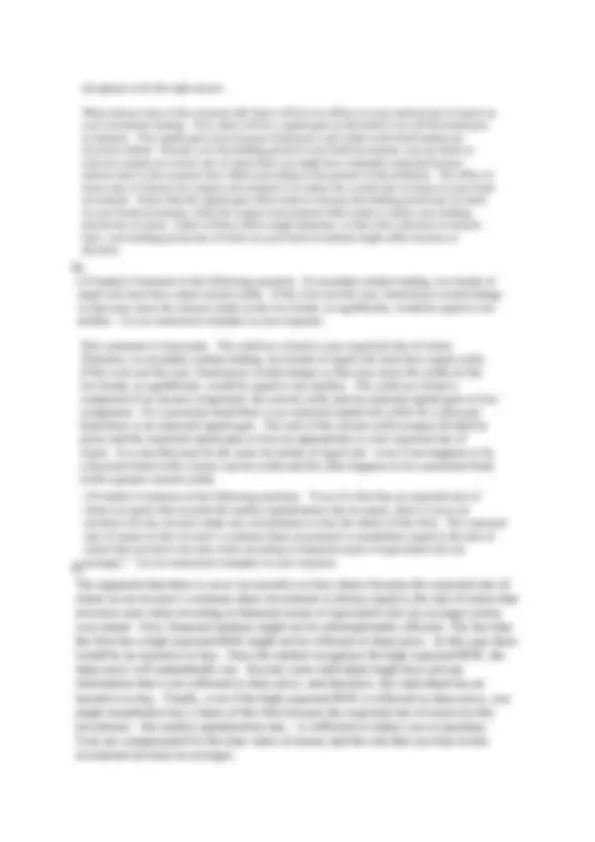
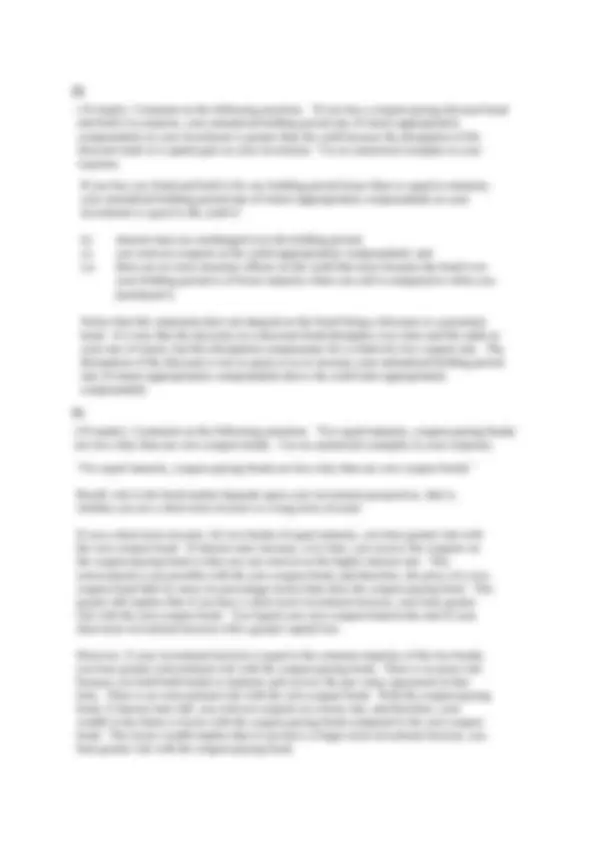
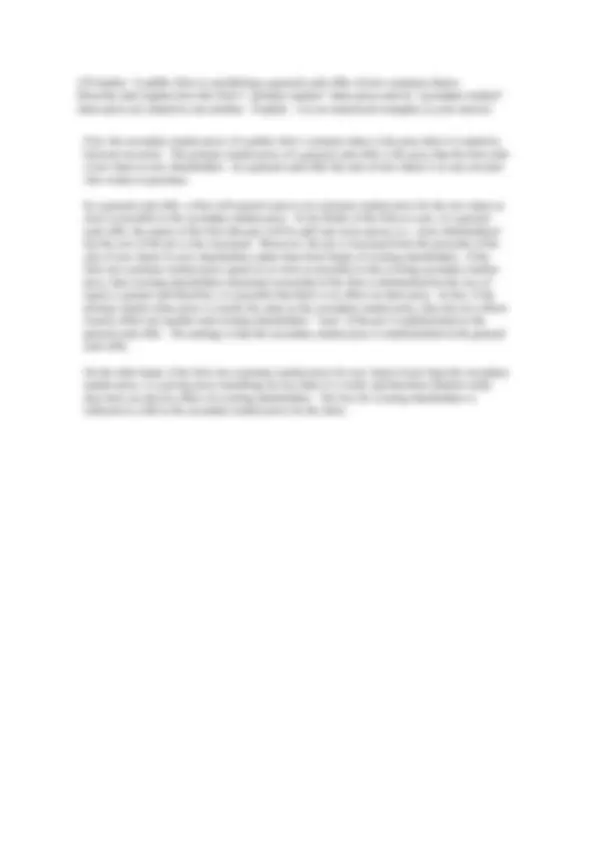
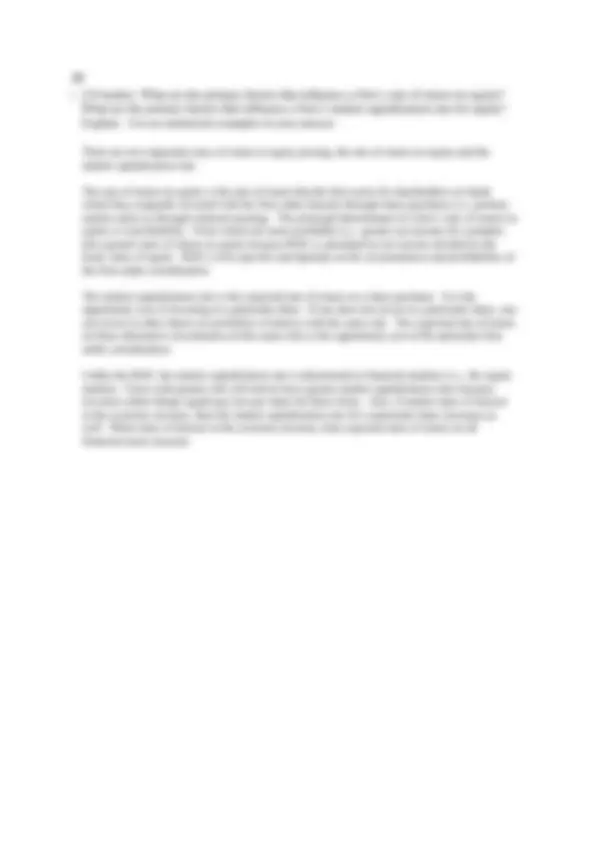


Study with the several resources on Docsity

Earn points by helping other students or get them with a premium plan


Prepare for your exams
Study with the several resources on Docsity

Earn points to download
Earn points by helping other students or get them with a premium plan
Community
Ask the community for help and clear up your study doubts
Discover the best universities in your country according to Docsity users
Free resources
Download our free guides on studying techniques, anxiety management strategies, and thesis advice from Docsity tutors
bus312 final short answer notes by category
Typology: Exams
1 / 19

This page cannot be seen from the preview
Don't miss anything!












Expected capital loss for premium bond
1 6. Explain why the constant growth version of the discounted dividend model with positive growth makes no economic sense if the market capitalization rate exceeds forward ROE. If the market capitalization rate exceeds the forward ROE, then every new investment (including reinvestment) that the firm makes into business activity on behalf of shareholders is a negative NPV investment which destroys shareholder wealth. The return on the investment (ROE, which is an IRR) does not meet the opportunity cost: the market capitalization rate. The firm could increase shareholders’ wealth (share price) by setting retention to zero and paying out all of earnings as a perpetually non-growing dividend. The value of the financial asset today is 1000(1.02)/(0.1-0.02) = $12,750. In three years the nominal value of the financial asset immediately after the payment at that time is 1000*1.024/(0.1-0.02) = $13,530.40. The real value of the financial asset in today’s purchasing power is $13,530.40/(1.02)*3 = $12,750. The real value of the financial asset does not change because its payment growth is only because of inflation and this growth does not add to your ability to consume goods and services. 3. (10 marks) Other than value and expenditure, list four economic determinants of the value to expenditure ratio for a firm’s business investments. No explanation required, just list. 1. Growth, 2. Corporate profitability as measured by the ROIC (rate of return on invested capital after tax and after depreciation) or ROE (the rate of return on equity). 3. Interest rates in the economy, 4. Risk for shareholders as measured by the degree of operating leverage and financial leverage ratios 4, (10 marks) Comment on the following assertion. “When you buy a bond or preferred share, your expected rate of return per annum is composed of income and only income with no expected capital gain or expected capital loss.” Use no numerical examples in your response. The expected rate of return upon buying a preferred share is dividend yield and, generally, only dividend yield. One does not generally buy a preferred share with the expectation of a capital gain. On the other hand, the expected rate of return to buying a bond is the current yield (coupon divided by quoted price), which is the income component of an investor’s expected rate of return. However, for a bond, in addition to the income component of expected return, an investor also expects a capital gain from the dissipation of the discount for a discount bond (as time passes and maturity approaches) or the dissipation of the premium for a premium bond. Expected capital loss for premium bond